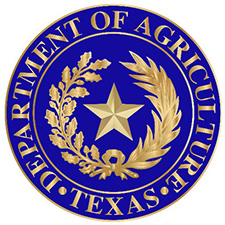Russia benefits from throttling Ukrainian grain traffic
Russia’s months-long drive to shut off Ukraine grain exports has produced both financial and diplomatic gains for President Putin, said a Washington think tank. “Securing ample and low-cost export routes for Ukrainian grain and increasing investments to rebuild Ukraine’s agricultural sector are crucial to to defusing what has become one of Russia’s most potent weapons in its war with Ukraine,” said the Center for Strategic and International Studies.
Corn and soybeans rule the acreage roost
For the past 30 years, U.S. farmers have increased dramatically the amount of cropland that is planted to corn and soybeans — from 45 percent in the mid-1990s to 60 percent now — say four agricultural economists at the farmdoc daily blog.
TODAY’S QUICK HITS
Bankrolling food influencers: The food, beverage, and dietary supplement industries have paid dozens of registered dietitians to produce material on social media that promotes the industries’ products, and the relationship often was not explicitly disclosed. (Washington Post)
Low water hits harvest—again: For the second year in a row, low water on the Mississippi River is slowing barge traffic and driving up freight rates at harvest time in the Midwest. (Associated Press)
HotHog for cool pigs: HotHog, a USDA app, lets farmers know when heat stress may be affecting their herds, an issue that combines animal welfare with production efficiency. (Ambrook Research)
Rural towns need water: Persistent drought in the Plains has forced towns in southeastern Kansas to conserve, as their drinking water comes from lakes where water levels are dropping. (States Newsroom)
Wheat exports shrivel: Exports of U.S.-grown hard red winter wheat will shrink to 155 million bushels this marketing year, the smallest total since record-keeping began in 1973, due to drought, a long-term decline in wheat plantings, and increased competition overseas. (USDA)
ON THE CALENDAR
Monday
International nonprofit Climate Group hosts Climate Week NYC, “the largest climate event of its kind,” through Sept. 24, New York City. Climate Week is held annually in partnership with the United Nations General Assembly and is run in coordination with the United Nations and the City of New York, says Climate Group.
USDA releases monthly Livestock, Dairy and Poultry Outlook, 3 p.m. ET.
USDA releases weekly Crop Progress report, 4 p.m. ET.
Tuesday
Agriculture Secretary Tom Vilsack and House Agriculture chairman Glenn Thompson speak at the Axios conference on sustainability and food insecurity, 8 a.m. ET, Washington.
Senate Agriculture chairwoman Debbie Stabenow discusses the outlook for passage of the farm bill in 2023 as part of a “fireside chat” with Saxby Chambliss, a former committee chairman, 8:30 a.m. ET, Bipartisan Policy Center. The session also will be webcast.
Ohio State University holds an annual Farm Science Review, through Thursday, London, Ohio.
International Forum of Agricultural Robotics, Western Growers Association, and University of California sponsor California Agricultural Robotics and Technology Event, Thursday, Salinas, California.
Wednesday
Senate Energy and Natural Resources subcommittee hearing to examine drought impact on drinking water access and water availability, 2:30 p.m. ET, 366 Dirksen.
Informa Markets holds Natural Products Expo East, through Saturday, Philadelphia.
Friday
USDA releases monthly Cattle on Feed report, 3 p.m. ET.
Saturday
First day of fall in the northern hemisphere. Days will become shorter than nights until winter arrives on Dec. 21. The full moon that occurs closest to the autumnal equinox is called the harvest moon.











